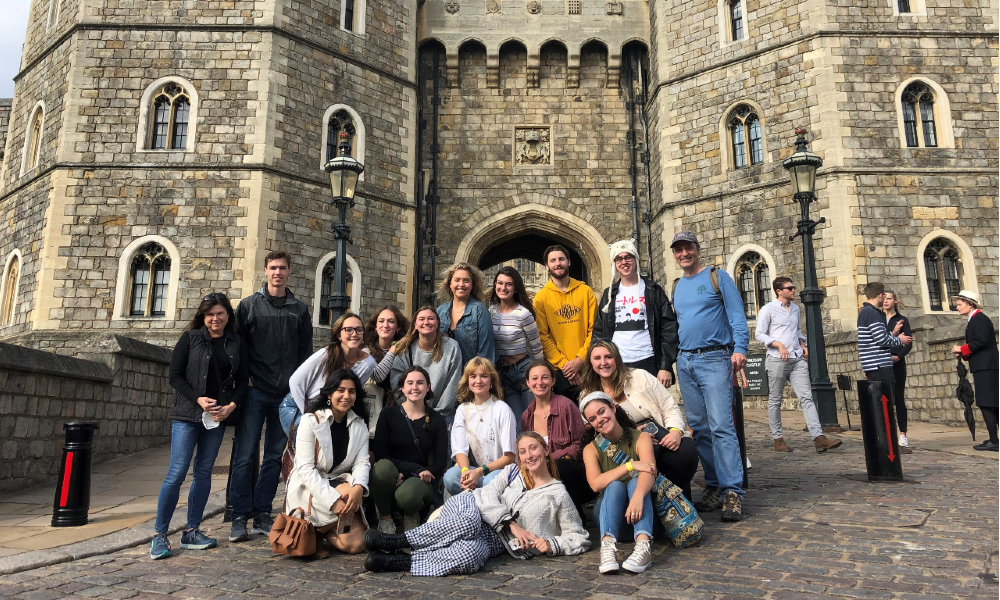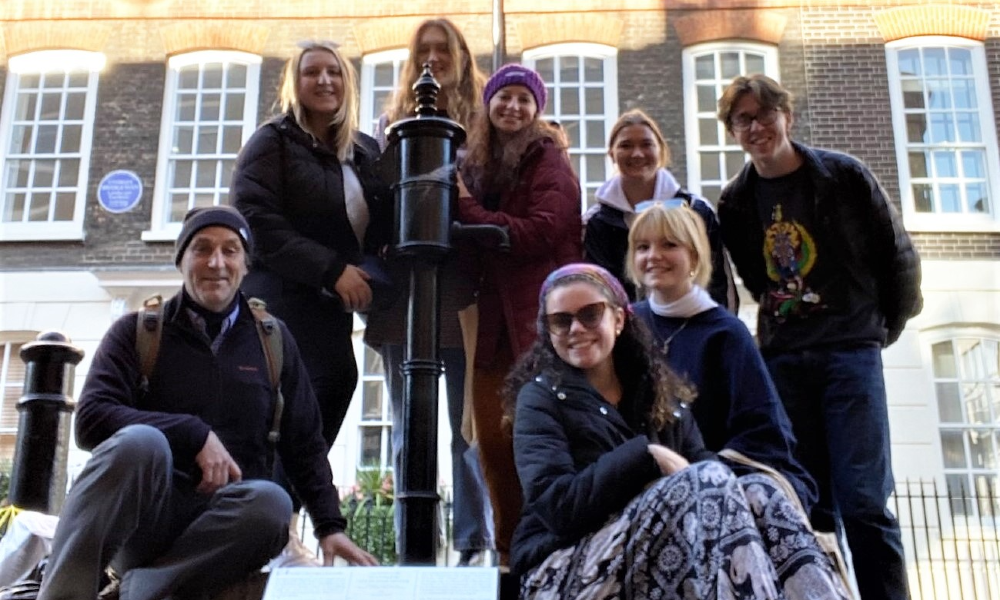ISAT professor mixes the arts with science
News
SUMMARY: Tom Benzing, professor of Integrated Science and Technology, designed and offered his course, Environmental Issues in Science and Technology (ISAT 112), to take advantage of connections to the rich history of London.
By Sophie Edlich, CISE student writer
Tom Benzing, professor of Integrated Science and Technology, served as the Faculty-Member-In-Residence for JMU’s Semester in London program during Fall 2021. Benzing designed and offered his course, Environmental Issues in Science and Technology (ISAT 112), to take advantage of connections to the rich history of London. For some, science may pose a challenge. However, Benzing saw this as an opportunity to mix the arts and science – especially since most of his students were non-science majors.
By understanding the academic make-up of his students, Benzing focused on connecting his teaching to scientists from London. “In thinking about how to offer the course,” Benzing said. “I wanted to emphasize that science is conducted by people. During the 18th and 19th centuries, London was the place to be to interact with the great minds of the time.”
Benzing and his students visited The Faraday Museum, dedicated to scientist Michael Faraday and his work on electromagnetism. Students were able to observe Faraday's preserved lab and examples of the scientific equipment he used.
They walked through the district of Soho to learn about John Snow, a scientist who determined that the Cholera outbreak in London originated from a water pump in Soho. Snow is also known as the father of epidemiology, the study of where diseases come from and how they spread—a relatable topic during the COVID-19 pandemic.
Sophomore Avery Goodstine recalls visiting the Cholera pump, "That was the start of being able to physically track where diseases start and how they spread to people," she says. "It was really cool to make that connection."

Benzing engages his students with hands-on activities. They traveled to St. James Park and to the shore of River Thames to measure water quality. Students formed teams and scattered along the lakeshore to compile and compare data from each location. "It was neat just being able to explore London while also using the instruments to learn about London's water properties," says senior Andy Arias.
Students also studied sunlight intensity - how the atmosphere and pollution in an area affect the intensity of sunlight. "We could see the effects of climate change and pollution by running these tests in London," recalls Brady Wortzel, who mapped a grid in Bloomsbury Square to document the sunlight intensity. "I think seeing the effects we can have on the environment in real places was much more memorable than what we would do in the class lectures."
There was no need to perform scientific experiments to see the result of pollution in London. Instead, students could see older buildings covered in black soot due to the smog. They also gained an understanding of biodiversity through the added green space and world-renowned gardens installed throughout the city to help combat pollution.
Learning about science and the environment in London has been a memorable experience for both Benzing and his students. "The people, places, and ecosystem kept everyone fully engaged," says Benzing who hopes his ISAT class made an impact they'll remember forever.
"I would love to travel abroad to different locations and teach ISAT 112," says Benzing. “I enjoy making connections between my classes and the world." Benzing's students encourage others to study science abroad. "I think that having the opportunity to study abroad and take any science class is a great idea," says Avery. "There are so many other resources provided by other countries that we might not have the opportunity to interact with here."
